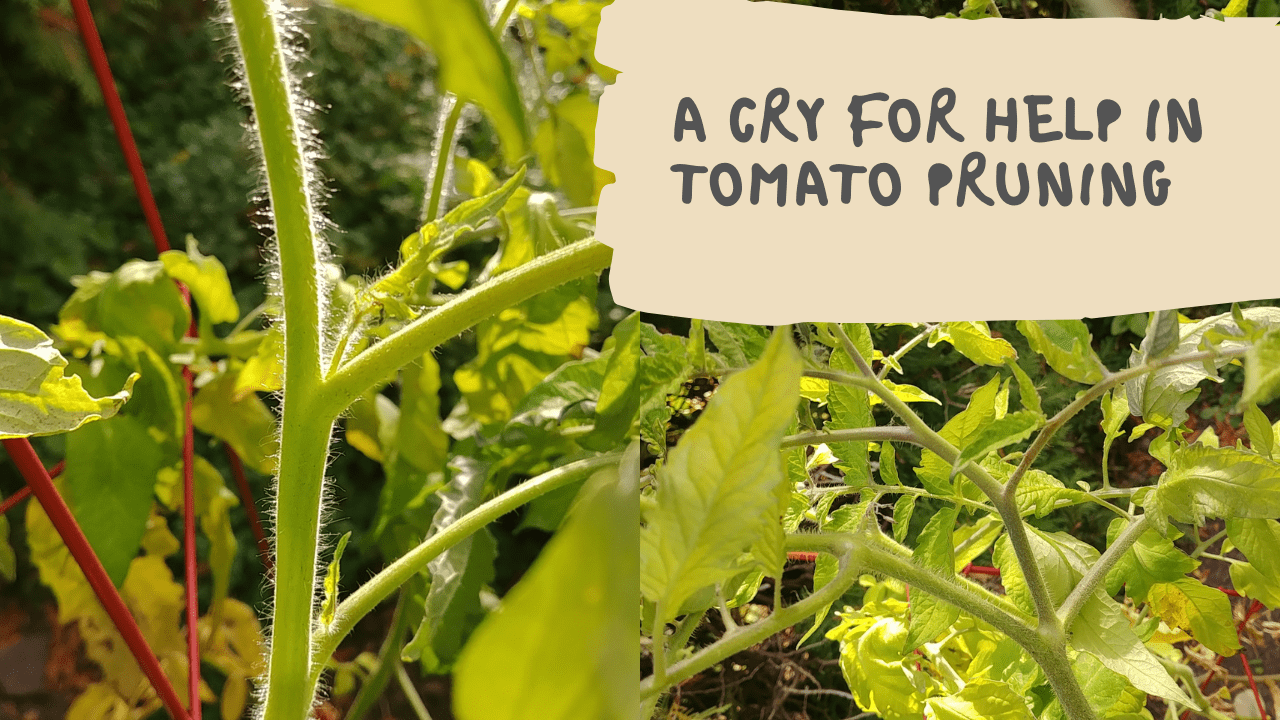Too much foliage, too little tomatoes ripening on your tomato plants?
I know how you feel.
I literally could not wait for every single tomato to change from green to red. They seem to take too long to ripen. What have I done to speed up the process of ripening?
Well, I’ll tell you. In today’s GardenHowTo video, you will learn:
- How to make your tomatoes ripen faster
- A trick to manipulate productivity of your tomato plant
- How to prevent all possible diseases on tomato plants
If you want to grow bigger, tastier and more tomatoes – without disappointments – this video is for you.
Hello GardenHowTo friends
Today I am broadcasting from the tomato forest.
These tomatoes behind me are planted in a perfect space for blossoming. They enjoy the best sun exposure, tomato plants love the sun, so it won’t be long until they are full of delicious fruits. They have not produced many tomatoes yet but they will soon. This plant close by, the one behind me, you will see that there is lots of foliage, lots of branches with flowers on them. However, there are no fruits, do you wonder why?
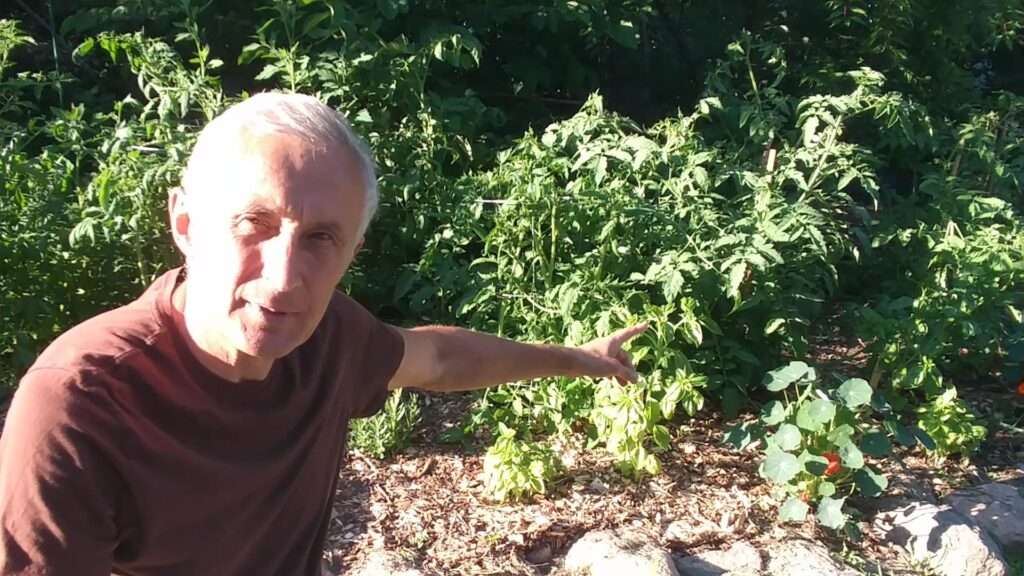
The reason is there are many branches that are created without fruits growing on them. As a result, all energy of the plant was redirected towards these branches. In fact, all the side branches from the main stem are suckers that could be removed.
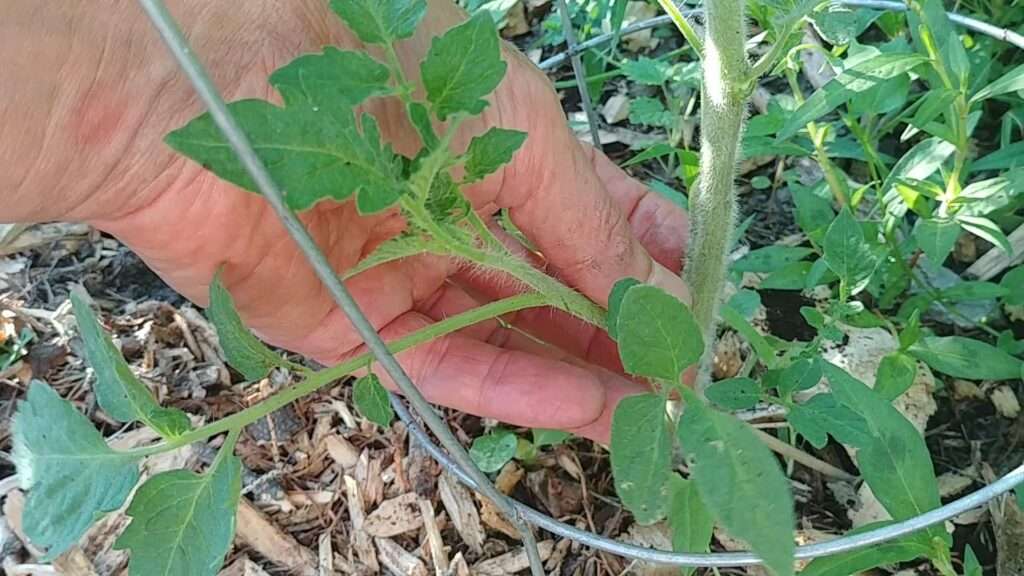
Today I’m going to show you how to prune tomatoes so that the energy from the root will be directed toward creating those juicy fruits that you cannot wait to eat!

Let’s focus first on this simple tomato plant, meaning it’s not overgrown and bushy yet. Let’s see how it look’s right now, it is important to inspect the structure of the plant. I’m going to remove the suckers so the plant continues to grow with better air circulation around the branches, this is another purpose to prune tomatoes for a bountiful harvest.
To allow air to freely circulate around the plant we don’t want the moisture to accumulate inside the canopy of the plant, especially along the bottom part of the stem. When the foliage becomes crowded at the base of the plant, there will be shade that attracts the moisture. That’s where the diseases come from, so what we have to do is to remove all of the bottom leaves.
Let’s say we cut off three leaves from the ground up. Next review every branch that goes off the main stem on the joint between the stem and the leaf. If we let all these branches grow, the plant will spend energy on feeding them, produce new blooms and fruits too. However those fruits will be small so we reduce this energy by cutting off not productive branches, which are literally ‘suckers’. This one is a sucker too, see how it goes to the side so I have removed it too.
Now, as you see, we have a completely clean stem on the bottom. I am going to continue removing each and every one. This small sucker I have I will take off and as you can see that’s where the main fruits are created. That’s where we have to move the energy so I am taking this sucker off. Now this plant is ready to go, the pruning is done! In addition to this fruit branch, more energy will be taken from the main stem see there are new blooms coming up here and there will be more as long as the main stem grows and it does not create the side branches.
Let’s move to the more complex plant but I’m not going to waste your time on pruning the whole tomato plant. I’ll just show the plant before I really use the pruners to cut all of the suckers. This is a big bush grown from one root so I have to work hard to cut all of the suckers as well as the bottom leaves. If I start from this one, see how much shade is under the plant, so we have to clean all of this, so bear with me while I will work on this plant.
BEFORE and AFTER:
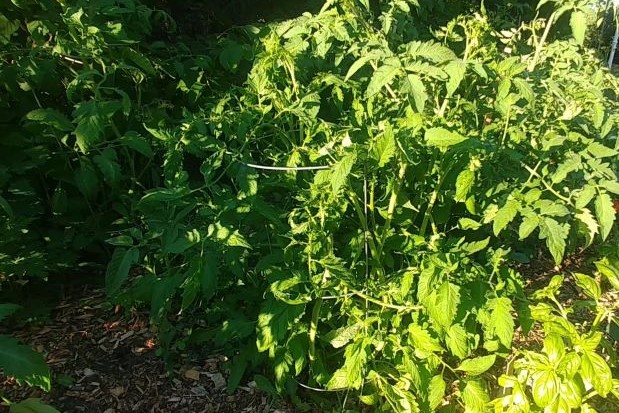
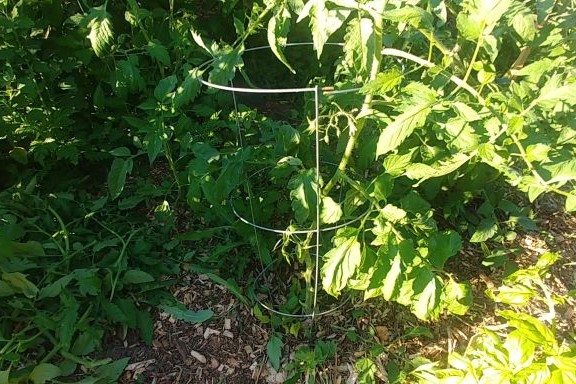
I’m back after cutting the suckers and now you can see the clean-pruned plant. Surprise, surprise! Under all of this shade, there are new fruits coming up!
There is one exception when pruning suckers. If the sucker grows to the size that it starts to produce flowers and fruits I leave that sucker alone. I let suckers like that produce the fruits. This is the main stem, when I go higher we have a big split here. On this big split, both branches look equal so it’s hard to identify which to prune so I let both of these grow and produce blooms and fruits. See on this side it’s blooming already and the same on this side too.
Now, when you’re in the season when you know for sure there will be enough warm days coming ahead you can still leave some suckers on purpose to produce fruits. Note, only “some” though.
I learned this trick while helping a friend of mine, an apple farmer, to prune the fruits on the branches yet when apples are in about one and a half inch diameter size. We cut off the apples that are sitting close to each other and left only those that have enough space on the branch to grow to market-accepted size. Also, we were making sure that there is a number of apples remaining on a branch so that the supply of the nutrients from the root is applied sparingly to all the apples and every single branch is not overloaded with fruits that otherwise will grow smaller in size.
I might sound a bit scientific here but for tomatoes, this technique is simpler. Before cutting off the suckers you overlook the plant and see if you can leave some suckers to help produce more fruits. Make sure those remaining fruits will be created equally on the plant with an even energy supply to them.
That’s how you can manipulate or saying softly “manage” productivity on your tomato plant. ☺
I encourage you to keep growing your own tomatoes so that you don’t depend on the supermarket. This way you can better control what you grow and what you put inside your body and live in abundance with nature and the gardens around. Thank you for watching GardenHowTo!
If this post has helped you in some way or if you have any further questions I’d love to hear from you. Feel free to reply with your comment below.
I would love to have you as a member of The GardenHowTo Club! Let me help you start the food forest of your dreams. I’m working on building an online community to give you the tools and resources you need to grow your first edible plant or revive your food-growing paradise.

